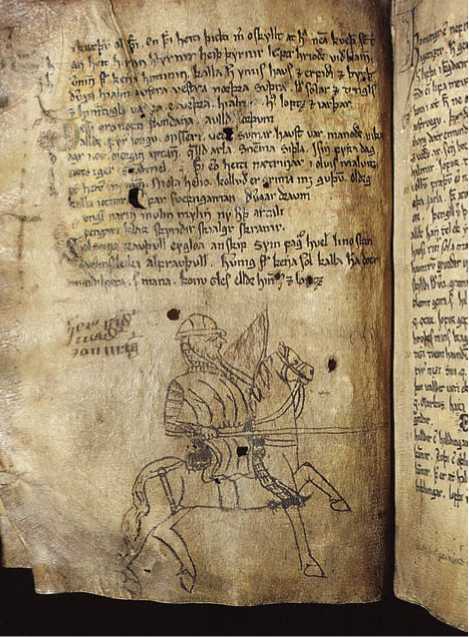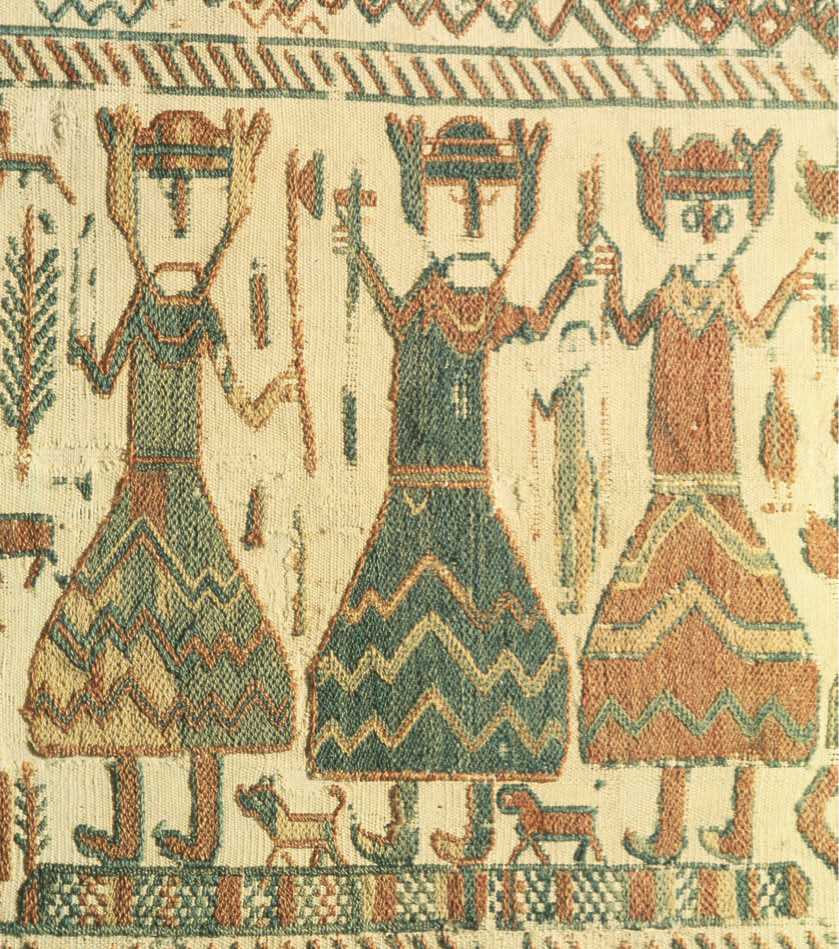The unique world pictured by the preChristian Vikings, a universe populated by a large number of gods and other superhuman beings and monsters, was described in a large collection of myths. Unfortunately, many of the original writings that recorded these tales are gone. Most of what is known today about Norse mythology comes from a handful of surviving sources. The most important is the Prose Edda, a retelling of the principal myths composed by Snorri Sturluson in the 1220s.
According to these tales, at the center of the universe lay a gigantic ash tree called Yggdrasil. "Its branches reached the sky and spread over the earth," wrote the late Magnus Magnusson, a

An illustration of a mounted warrior graces a fourteenth-century copy of Snorri Sturleson's Prose Edda.
Leading authority on the Vikings. "At its base lay the Spring or Well of Fate, the source of all wisdom, tended by the three Norns [equivalent to the Greco-Roman Fates] who decided the destiny of all living creatures."55 The great tree's three major roots led to three realms. The lowest was Niflheim, the world of the dead. Further up was Midgard, where humans lived, and above that loomed Asgard, the realm of the gods, connected to Midgard by a rainbow bridge called Bifrost.
The chief resident of Asgard was Odin, the leader of the main race of Norse gods, the Aesir. The oldest of their number, he possessed numerous powers and roles, including storm maker, war god, and master magician. Odin managed to maintain his high position in part because of these powers, but also because he could change his shape at will, which gave him a huge advantage over most opponents. Odin also had great wisdom. For that reason, Vikings of all walks of life lived by and enjoyed quoting his practical advice, which was handed down from one generation to another. Typical was a gem of Odinic wisdom from the ninth - or tenth-century document the Havamal, or "Sayings of the High One": "Only a fool lies awake all night and broods over his problems. When morning comes, he is worn out and his troubles [are] the same as before."56 According to Viking mythology, Odin ruled over an estate in Asgard called Valhalla, the "Hall of the Heroes," where the souls of Viking warriors went. When a hero fell in battle, several angel-like female war-riors—the Valkyries—guided him to Valhalla.
According to the Prose Edda, there were a number of other mighty gods. Among them was Odin's son Thor, a warrior deity who could command the elements, including wind, thunder, and lightning. Wolf describes him as
The defender of the Aesir against
Their natural enemies, the giants
And giantesses. His weapon was the
Hammer, Mjollnir, with which he held the forces of chaos in check. He also possessed a pair of iron gloves with which to grasp the hammer and a belt. And when he girded himself with the belt, his divine strength was doubled.57
Other important Norse gods included Odin's wife Frigg; Thor's wife Sif; Ty, god of justice; Freyja, goddess of love; Loki, the "trickster," who was part god and part demon; and Loki's daughter Hel, who oversaw the ghastly realm of the dead. (The familiar phrase "go to
The deities Odin, Thor, and Frey are depicted in stately poses on a Norse tapestry made in Sweden in the twelfth century.





 World History
World History









